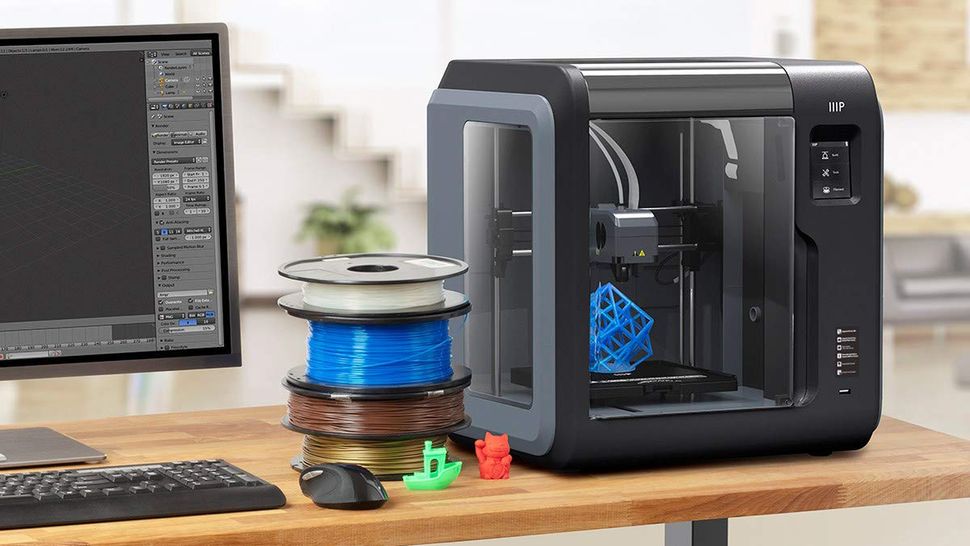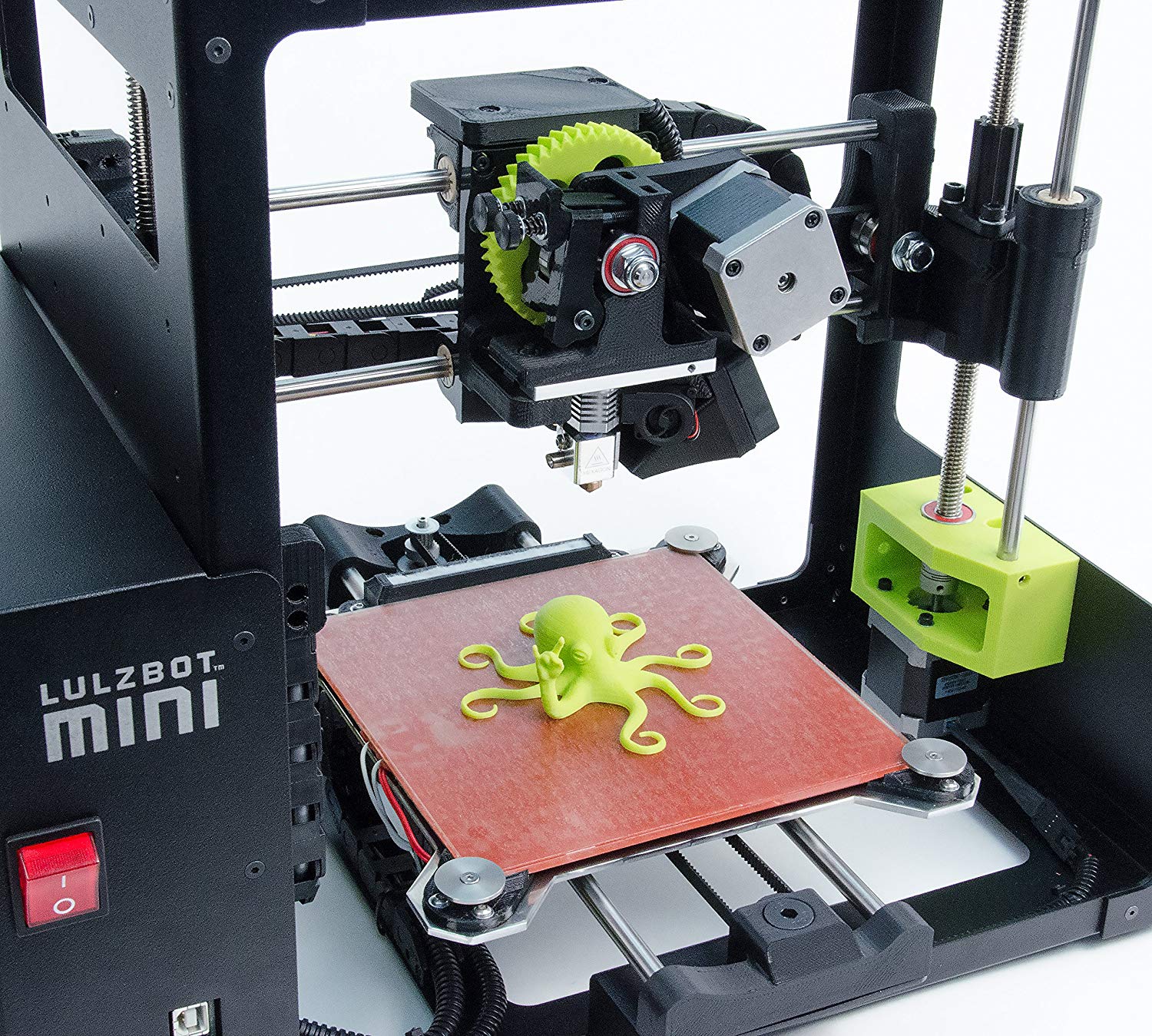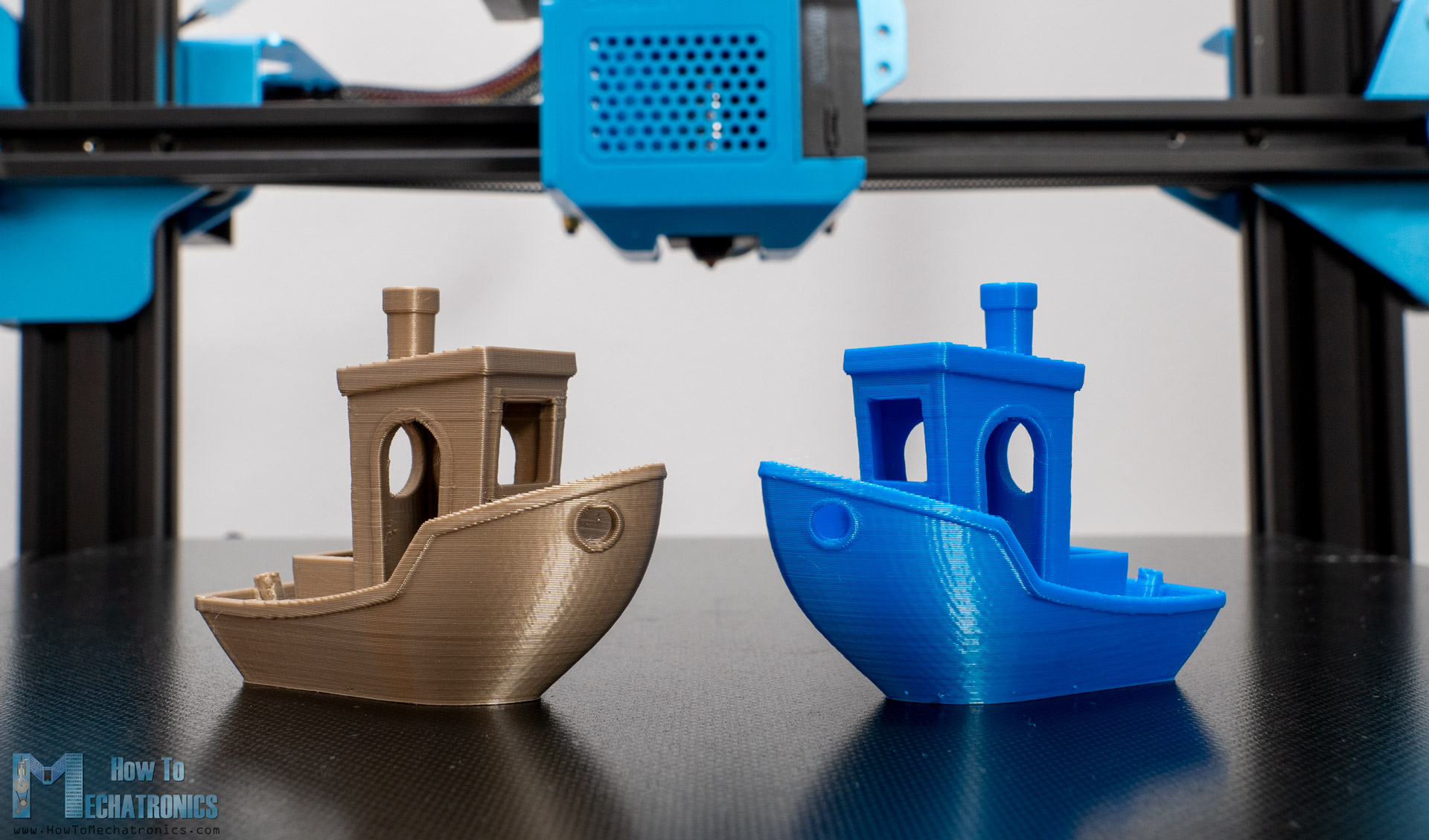What is the best 3D printer for beginners? Stepping into the world of 3D printing can be exciting, but choosing the right printer can feel overwhelming. With so many options available, it’s essential to understand the basics of 3D printing technology, key considerations for beginners, and popular models that cater to your needs.
This guide will equip you with the knowledge to make an informed decision and embark on your 3D printing journey.
3D printing, also known as additive manufacturing, is a process that builds three-dimensional objects layer by layer from a digital design. It involves using a computer-aided design (CAD) software to create a digital model, which is then sliced into thin layers.
The printer then uses a material, like plastic or resin, to build the object layer by layer, following the digital instructions.
Understanding 3D Printing Basics

D printing, also known as additive manufacturing, is a revolutionary technology that has transformed various industries, from manufacturing and healthcare to education and art. It allows you to create three-dimensional objects from a digital design by layering materials, one thin layer at a time.
Different Types of 3D Printing Processes
Understanding the different 3D printing processes is crucial for selecting the right printer for your needs. Each process utilizes a unique technique and material to build objects, influencing factors like print quality, speed, and cost.
- Fused Deposition Modeling (FDM): This is the most common and affordable 3D printing technology. FDM printers use a heated nozzle to extrude thermoplastic filaments, such as PLA or ABS, layer by layer, creating the desired object. FDM prints often have visible layer lines and can have some surface imperfections, but are generally robust and durable.
- Stereolithography (SLA): SLA printers use a vat of liquid photopolymer resin and a UV laser to solidify the resin layer by layer. SLA prints are known for their high resolution, smooth surfaces, and intricate details. However, SLA printers are typically more expensive and require post-processing steps to remove excess resin and cure the prints.
- Selective Laser Sintering (SLS): SLS printers use a laser to selectively fuse powdered materials, such as nylon or plastic, layer by layer. SLS prints are known for their high strength, durability, and ability to create complex geometries. They are often used for prototyping and functional parts.
Common Materials Used in 3D Printing
The choice of material depends on the intended use and properties of the printed object. Different materials offer unique advantages in terms of strength, flexibility, heat resistance, and aesthetics.
- PLA (Polylactic Acid): PLA is a biodegradable and bio-based thermoplastic that is widely used in 3D printing due to its ease of use, low cost, and relatively good strength. It is a good choice for prototypes, functional parts, and everyday objects.
- ABS (Acrylonitrile Butadiene Styrene): ABS is another common thermoplastic known for its strength, durability, and resistance to heat. It is often used for printing toys, enclosures, and functional parts that require high impact resistance.
- Resin: Resin is a liquid photopolymer material used in SLA 3D printing. It offers high resolution, smooth surfaces, and intricate details, making it suitable for models, jewelry, and dental applications.
Key Considerations for Beginners

Choosing your first 3D printer can be exciting, but it’s important to consider a few key factors before diving in. The best printer for you depends on your budget, the projects you want to create, and your comfort level with technology.
Print Quality
Print quality is a crucial factor, especially for beginners. You want a printer that produces good-looking prints with minimal flaws. While there are many factors that contribute to print quality, here are some things to consider:
- Resolution:Higher resolution printers offer finer detail and smoother surfaces. Resolution is measured in microns (µm), with lower numbers indicating higher resolution. For example, a printer with a resolution of 50 µm will produce finer details than a printer with a resolution of 100 µm.
- Layer Height:Layer height refers to the thickness of each layer of plastic deposited by the printer. Lower layer heights result in smoother surfaces and more detail, but they also take longer to print. For most beginners, a layer height of 0.1-0.2 mm is a good starting point.
- Extruder:The extruder is the part of the printer that melts and pushes out the filament. A good extruder should be able to handle a variety of filaments and produce consistent results. Look for extruders with a well-designed hot end and a reliable drive system.
Build Volume
Build volume refers to the maximum size of a print that your printer can handle. This is an important consideration, especially if you plan on printing larger objects. Smaller printers typically have a build volume of 100 x 100 x 100 mm, while larger printers can handle objects up to 300 x 300 x 300 mm or more.
Consider the size of the projects you want to create and choose a printer with a build volume that meets your needs.
Ease of Use
For beginners, ease of use is a major factor. You want a printer that is easy to set up, operate, and maintain. Look for printers with user-friendly software, clear instructions, and a supportive community. Some printers offer features like automatic bed leveling and filament runout detection, which can make printing easier and more reliable.
Cost
D printers range in price from a few hundred dollars to several thousand dollars. It’s important to set a budget before you start shopping. Consider the features you need and the projects you want to create. Don’t feel pressured to buy the most expensive printer, especially if you’re just starting out.
There are many affordable printers that can produce excellent results.
Popular 3D Printer Models for Beginners
Now that you have a basic understanding of 3D printing and the key factors to consider, let’s dive into some popular 3D printer models that are great for beginners. These models offer a good balance of features, ease of use, and affordability.
Recommended 3D Printer Models
This table compares and contrasts several popular 3D printer models, highlighting their specifications, price range, pros, and cons. This information can help you choose the best printer for your needs and budget.
| Model | Specifications | Price Range | Pros | Cons |
|---|---|---|---|---|
| Creality Ender 3 |
| $150
|
|
|
| AnkerMake M5 |
| $400
|
|
|
| Elegoo Mars 2 |
| $300
|
|
|
| Prusa i3 MK3S+ |
| $700
|
|
|
Essential Accessories and Software

Having a 3D printer is only the first step; to get the most out of your machine, you’ll need some essential accessories and software. These tools will make your 3D printing experience smoother, more enjoyable, and help you achieve better results.
Essential Accessories
Having the right accessories is crucial for a successful 3D printing journey. They ensure your printer operates efficiently, maintain print quality, and help you clean up after printing.
- Filament:The plastic material that your 3D printer uses to create objects. There are many different types of filament available, each with its own properties, such as strength, flexibility, and heat resistance. Popular choices for beginners include PLA (polylactic acid) and ABS (acrylonitrile butadiene styrene).
- Build Plate:The surface on which your 3D print is built. A good build plate should be flat, smooth, and have good adhesion properties to prevent your print from warping or detaching during printing. Some popular build plate options include glass, PEI (polyetherimide), and textured surfaces.
- Cleaning Tools:3D printing can leave residue on your prints and the printer itself. A small brush, scraper, and a damp cloth will help you remove excess filament and keep your printer clean.
- Spanner Wrenches:These are essential for adjusting the bed level and other settings on your printer.
- Storage Containers:Keep your filament dry and organized using airtight containers. Moisture can affect the quality of your prints.
User-Friendly 3D Printing Software, What is the best 3d printer for beginners
D printing software, also known as slicing software, plays a crucial role in preparing your 3D models for printing. It translates your 3D design into instructions that your 3D printer can understand.
- Cura:A free and open-source software that is very user-friendly, making it a great choice for beginners. Cura offers a wide range of features and is compatible with most 3D printers.
- Simplify3D:A more advanced and feature-rich slicing software, Simplify3D provides more control over print settings and offers advanced features like support generation and print optimization. It is a paid software, but it offers a free trial period.
- PrusaSlicer:Developed by Prusa Research, this software is specifically designed for Prusa 3D printers. It’s free, open-source, and offers a user-friendly interface with many advanced features.
Understanding Slicing Software
Slicing software is the bridge between your 3D model and your 3D printer. It takes your 3D design file, usually in an STL format, and slices it into thin horizontal layers. These layers are then translated into G-code, which is a set of instructions that your 3D printer can understand and follow to create your 3D print.
Slicing software is the key to converting your digital designs into tangible 3D objects.
- Print Settings:Slicing software allows you to customize print settings like layer height, infill density, print speed, and nozzle temperature. These settings directly affect the quality, speed, and cost of your print.
- Support Structures:For complex designs with overhangs or intricate details, slicing software can generate support structures that help your print stay intact during printing. These supports are usually printed in a soluble material that can be easily removed after the print is complete.
- Print Preview:Most slicing software offers a 3D preview of your print, allowing you to visualize how your model will be printed and make any necessary adjustments before sending the print job to your printer.
Getting Started with 3D Printing

Now that you have your 3D printer, it’s time to get your hands dirty! Setting up and calibrating your new machine is an essential first step. This process might seem daunting at first, but it’s actually quite straightforward. We’ll guide you through each step, making sure you’re ready to print your first masterpiece.
Finding the best 3D printer for beginners can be tricky, but it’s worth the effort! You’ll want something easy to use and reliable, like the Creality Ender 3. Once you get the hang of it, you can print all sorts of cool things, even famous artwork like a don quixote picasso print.
So, pick a printer that fits your budget and get ready to create!
Setting Up Your 3D Printer
The initial setup involves assembling the printer, installing software, and connecting it to your computer. Most 3D printers come with detailed instructions, so it’s essential to follow those carefully.
- Unpacking and Assembly:Carefully unpack your printer and identify all the components. Follow the manufacturer’s instructions for assembly, which often include diagrams and step-by-step guidance. Ensure all parts are securely fastened and that the printer is level.
- Software Installation:Install the necessary software for controlling your 3D printer and slicing 3D models. Slicing software converts 3D models into instructions that your printer can understand. Popular options include Cura, PrusaSlicer, and Simplify3D. The manufacturer might provide specific recommendations for software compatible with your printer model.
- Connecting to Your Computer:Connect your printer to your computer via USB cable or Wi-Fi, depending on the model. Refer to your printer’s documentation for specific instructions on how to establish a connection.
Calibrating Your 3D Printer
Calibration is crucial for ensuring accurate prints. It involves adjusting settings to match the printer’s physical characteristics.
- Bed Leveling:The bed leveling process ensures that the print nozzle is at the correct distance from the print bed. This is essential for achieving good adhesion and preventing prints from warping or detaching. Most printers have an auto-bed leveling feature, but manual leveling might be required for some models.
To manually level the bed, you’ll need to adjust the screws on the print bed to ensure the nozzle is at the correct height across the entire surface.
- Extrusion Calibration:Extrusion calibration ensures that the printer is extruding the correct amount of filament. This is important for achieving consistent print quality and preventing under- or over-extrusion. You can perform extrusion calibration by printing a specific test pattern and adjusting the extrusion multiplier in your slicing software until the pattern matches the expected dimensions.
Loading Filament
Loading filament is the process of feeding the filament into the printer’s extruder.
- Inserting the Filament:Locate the filament feed tube on your printer and insert the end of the filament into the tube. You may need to push it gently until it reaches the extruder.
- Heating the Extruder:Turn on the printer and heat the extruder to the recommended temperature for your filament type. The extruder will melt the filament, allowing it to flow smoothly through the nozzle.
- Prime the Nozzle:Once the extruder is hot, you can prime the nozzle by extruding a small amount of filament. This helps to clear any blockages and ensures that the filament is flowing properly.
Performing Test Prints
Before printing your first project, it’s a good idea to perform some test prints to ensure that your printer is calibrated correctly.
- Print a Calibration Cube:A calibration cube is a standard test print that helps you assess the printer’s accuracy and identify any potential issues. If the cube has the correct dimensions, your printer is likely calibrated correctly.
- Print a Benchmark Model:There are many benchmark models available online that can help you test different aspects of your printer’s performance, such as layer adhesion, overhangs, and bridging.
Troubleshooting Common Beginner Challenges
As a beginner, you might encounter some challenges. Here are some common issues and how to address them:
- Print Not Sticking to the Bed:If your print isn’t sticking to the bed, try cleaning the bed with isopropyl alcohol and applying a thin layer of adhesive. You can also adjust the bed temperature or try a different bed leveling method.
- Filament Jamming:If the filament jams in the extruder, try heating the extruder to the recommended temperature and gently pushing the filament through the nozzle. If that doesn’t work, you might need to remove the nozzle and clear the blockage.
- Inconsistent Print Quality:If your prints are inconsistent, try adjusting the print settings, such as layer height, print speed, and temperature. You can also try a different filament type or calibrate your printer again.
Exploring Creative Possibilities

The world of 3D printing opens up a universe of creative possibilities, allowing you to bring your ideas to life in tangible form. Whether you’re a hobbyist, a tinkerer, or a budding entrepreneur, 3D printing empowers you to explore your imagination and transform digital designs into physical objects.
Applications for Beginners
D printing offers a wide range of applications for beginners, from crafting personalized gifts and toys to prototyping innovative designs and exploring educational concepts.
- Hobbies:3D printing can be a fun and rewarding hobby. You can create custom figurines, jewelry, home decor, and even personalized gifts for friends and family. The possibilities are endless, limited only by your imagination.
- Prototyping:3D printing is an excellent tool for prototyping new designs and products. You can quickly and easily create physical models to test your ideas, make adjustments, and iterate on your designs before committing to expensive production runs.
- Education:3D printing can be a valuable educational tool for students of all ages. It can help them learn about design, engineering, and technology in a hands-on way. Students can design and print their own projects, fostering creativity and problem-solving skills.
Inspiring Examples
There are countless inspiring examples of 3D printed projects and designs.
- Prosthetics:3D printing has revolutionized the field of prosthetics, allowing for the creation of customized and affordable prosthetic limbs. For example, the e-NABLE project uses 3D printing to create low-cost prosthetic hands for children in need.
- Architecture:3D printing is being used to create intricate and complex architectural structures. For instance, the “3D Printed House” project in Amsterdam is a groundbreaking example of using 3D printing to build sustainable and affordable housing.
- Art:3D printing is becoming increasingly popular among artists, who are using it to create unique and innovative sculptures, installations, and even wearable art. The possibilities for artistic expression are truly boundless.
Online Communities and Resources
The 3D printing community is a vibrant and supportive one, with numerous online forums, websites, and social media groups dedicated to sharing knowledge, inspiration, and projects.
- Thingiverse:A vast online repository of 3D printable designs, Thingiverse is a great resource for finding inspiration and downloading free models.
- Reddit:The r/3DPrinting subreddit is a popular forum for discussing 3D printing topics, sharing projects, and getting help with troubleshooting issues.
- YouTube:YouTube is a great source for 3D printing tutorials, reviews, and inspiration. Many channels dedicated to 3D printing offer step-by-step guides and demonstrations.
Popular Questions: What Is The Best 3d Printer For Beginners
What is the difference between FDM and SLA 3D printing?
Fused Deposition Modeling (FDM) uses a filament that is melted and extruded layer by layer, while Stereolithography (SLA) uses a liquid resin that is cured by a UV laser, resulting in smoother, more detailed prints.
What are some common materials used in 3D printing?
PLA (Polylactic Acid) is a popular bio-based plastic, known for its ease of use and low cost. ABS (Acrylonitrile Butadiene Styrene) is a stronger plastic with higher heat resistance. Resin is a photopolymer material used in SLA printers, offering high detail and smooth surfaces.
What are the benefits of using a 3D printer for beginners?
3D printing allows you to create custom objects, prototypes, and even functional parts. It’s a great way to explore your creativity, learn new skills, and bring your ideas to life.
